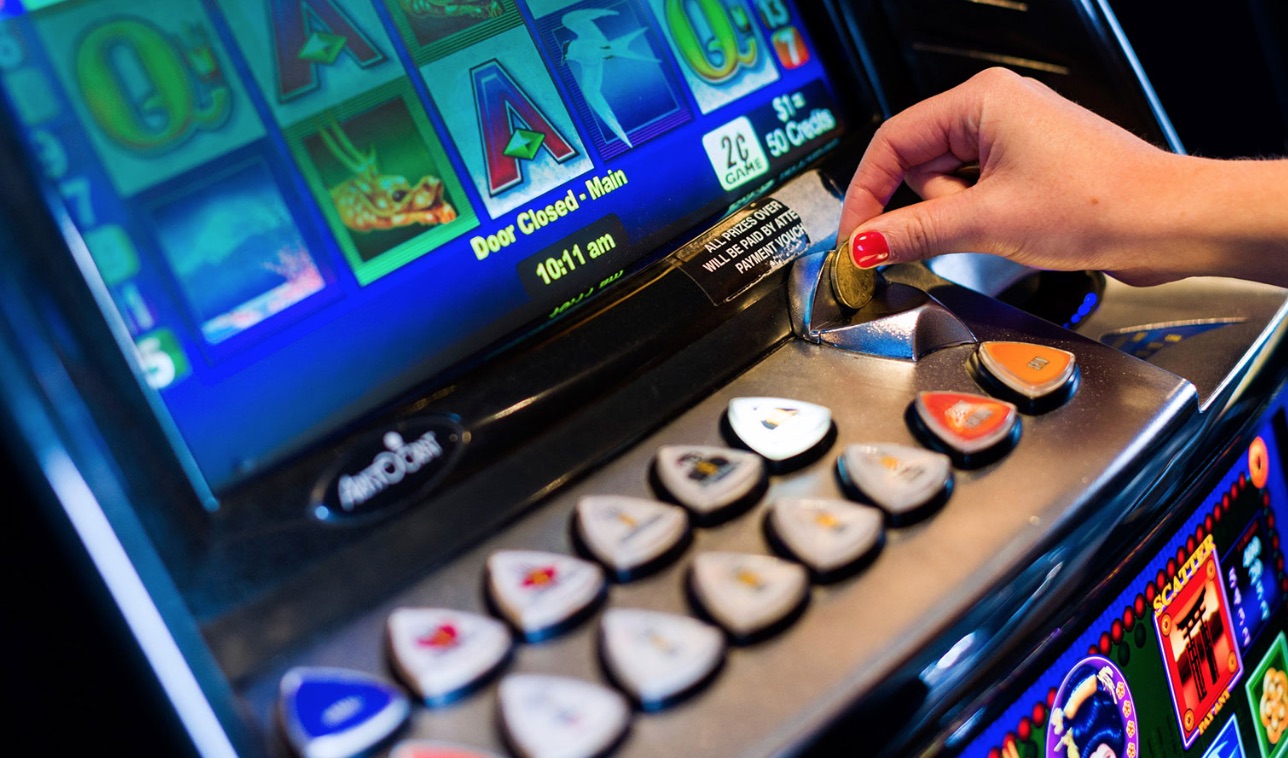Introduction
What Is UTG In Poker: In the world of poker, various positions at the table hold significant importance in determining the flow of the game. One such position is called “Under the Gun,” commonly referred to as UTG. Understanding the concept of UTG is crucial for any poker player looking to improve their strategy and decision-making skills.
UTG refers to the player who sits immediately to the left of the big blind and is the first to act in the pre-flop betting round. This position carries a unique set of challenges and considerations, making it a critical aspect of poker gameplay. The term “Under the Gun” implies that the UTG player is under pressure, being the first to act without any information about other players’ hands.
In this article, we will explore what UTG means in poker, its significance in the game, and the strategies commonly employed in this position. By understanding the dynamics of UTG, players can make more informed decisions, choose appropriate starting hands, and navigate the complexities of the game with greater confidence. So, let’s dive into the world of UTG in poker and uncover its intricacies.

What is UTG in poker?
The earliest position is the player to the immediate left of the big blind. This position is referred to as the “under the gun” or UTG position.
In poker, UTG stands for “Under the Gun.” It is a positional term used to refer to the player sitting immediately to the left of the big blind in a round of betting. The UTG position is considered one of the most challenging positions at the poker table because it requires acting first during the initial betting round.
Being UTG means that the player is one of the first to make a decision and has limited information about the actions of other players. This position requires careful consideration of hand selection and strategic decision-making. UTG players typically adopt a more conservative approach, as they have a wide range of opponents yet to act after them.
The term “Under the Gun” comes from the idea that the player in this position is under pressure, as they must act before the rest of the table. Understanding the dynamics of UTG play is important in developing a solid poker strategy and adjusting one’s range and betting decisions accordingly.
What is UTG +1 in poker?
“UTG+1” refers to the person who is sitting to the immediate left of the person who is “under the gun”. “Under the gun” refers to the person who sits to the immediate left of the two blinds (Small Blind, Big Blind). So, the person who is UTG+1 will act SECOND in pre-flop betting.
In poker, “UTG+1” refers to the player who is sitting to the immediate left of the player in the Under the Gun (UTG) position. The UTG+1 position is the second player to act in the preflop betting round, just after the UTG player.
The UTG+1 position is considered an early position at the poker table and typically requires stronger starting hands due to the increased number of players still to act after them. Players in the UTG+1 position have the advantage of acting with some knowledge of the actions taken by the players in the UTG position.
The UTG+1 position allows for a wider range of playable hands compared to the UTG position, but it is still important to exercise caution and consider the playing styles of the players yet to act. It is essential to be mindful of the table dynamics and adjust the starting hand selection and betting strategies accordingly in order to make informed decisions and maximize profitability in the game.
What is the opening range for UTG poker?
UTG Pre-flop Ranges
When you raise from UTG, the article says to defend 74 hands, while the opening range is 176 hands.
The opening range for UTG (Under the Gun) in poker can vary depending on various factors such as the specific game format, table dynamics, and individual playing style. However, a common guideline for a tight and conservative opening range in full-ring No-Limit Texas Hold’em (NLHE) is typically around 8-10% of hands.
A basic starting point for UTG opening range could include premium hands such as:
- Pairs: Pocket Aces (AA), Kings (KK), Queens (QQ), and sometimes Jacks (JJ).
- Strong suited connectors: Ace-King suited (AKs) and Ace-Queen suited (AQs).
- High suited Broadway hands: Ace-King offsuit (AKo) and Ace-Queen offsuit (AQo).
It’s important to note that these ranges are not set in stone and can be adjusted based on personal playing style, table dynamics, and skill level. Some players may opt for a wider or narrower range depending on their comfort level and knowledge of opponents’ tendencies.
As always, it’s essential to continuously adapt and make strategic decisions based on the specific game conditions and information available during the session.
What is the UTG strategy in poker?
Under the Gun (UTG) in Poker | What it is and How to Play
Definition. ‘Under the gun’ (or ‘UTG’) refers to the position to the immediate left of the big blind in flop games like Texas hold’em and Omaha poker. The under-the-gun player is the first to act before the flop. The term refers to the pressure that goes along with having to act before anyone else in the hand.
The UTG (Under the Gun) strategy in poker refers to the playing approach taken when seated in the first position to act in the preflop betting round. As the UTG player, you are at a disadvantage because you have little information about the other players’ hands and intentions. Therefore, a tighter and more selective strategy is generally advised.
Here are some key considerations and strategies for playing from the UTG position:
1. Start with a strong range of hands: Since you’ll be acting first, it’s crucial to have a strong starting hand selection. Focus on premium hands like high pairs (e.g., Aces, Kings), strong suited connectors (e.g., Ace-King suited, Ace-Queen suited), and high suited Broadway cards (e.g., King-Queen suited).
2. Avoid marginal hands: Hands that are usually playable from other positions may not be suitable for the UTG position due to the risk of facing raises from players in later positions. Avoid marginal hands like low suited connectors, low pairs, and weaker offsuit hands.
3. Use a tight-aggressive approach: When you decide to play a hand, be aggressive with your bets and raises. This helps to narrow the field and gives you more control over the hand.
4. Pay attention to table dynamics: Observe the playing styles and tendencies of the other players at the table. Adjust your strategy accordingly and exploit any weaknesses or patterns you identify.
5. Be prepared to fold: Don’t be afraid to fold if your hand doesn’t meet the criteria for a strong opening hand. Preserving your chips is crucial, especially in early position.
Remember, while the UTG strategy emphasizes caution and tight play, it’s essential to remain adaptable and consider other factors such as table dynamics and opponents’ tendencies to make optimal decisions.

What to play UTG?
The under the gun position in poker is the player in the earliest position, the one required to act first. It is abbreviated as UTG. In games with blinds, such as Texas Hold’em or Omaha, it is the player seated just to the left of the big blind. The under the gun player must act first pre-flop in a game with blinds.
When playing UTG (Under the Gun) in poker, it’s important to consider various factors such as your table image, stack size, opponents’ tendencies, and the specific game format. Here are some general guidelines for what to play UTG:
1. Start with a tight range: Since you are one of the first to act, it’s advisable to begin with a conservative and tight range of strong hands. This typically includes premium pocket pairs (AA, KK, QQ), strong suited connectors (AKs, AQs), and high suited Broadway hands (AKo, AQo).
2. Avoid marginal hands: It’s generally best to avoid playing marginal hands from UTG, such as small pocket pairs (2-2 through 9-9) and weak suited connectors. These hands tend to have less post-flop playability and can put you in difficult spots when facing aggressive actions from later positions.
3. Consider table dynamics: Assess the playing styles and tendencies of your opponents. If the table is tight and passive, you may be able to widen your opening range slightly. Conversely, if the table is aggressive or if there are strong players in later positions, it may be wise to tighten your range even further.
4. Adapt to stack sizes: If your stack is short, you might want to focus on playing premium hands with strong preflop equity. However, if you have a deep stack, you can consider including some speculative hands with good implied odds, like suited connectors or suited aces, to potentially play for big pots when you hit strong draws or flushes.
Remember that these are general guidelines, and adjusting your range based on the specific game conditions is crucial. Always stay observant and adaptable, taking into account the table dynamics and information you gather as the hand progresses.
What does “UTG” stand for in poker?
In poker, “UTG” stands for “Under the Gun.” It is a positional term used to refer to the player who is seated directly to the left of the big blind at the poker table. The term “Under the Gun” comes from the idea that the UTG player is under pressure due to their position.
Being UTG means that the player is the first to act in the betting rounds, specifically the preflop betting round. They must make their decision before any other player at the table, which poses a challenge as they have limited information about the strength of their opponents’ hands.
Due to the positional disadvantage, players in the UTG position typically adopt a more cautious and conservative playing style. They tend to have a narrower range of starting hands, focusing on stronger holdings that can withstand potential aggression from later-positioned players.
The UTG position sets the tone for the hand and requires careful consideration of factors such as hand strength, table dynamics, and opponent tendencies. Experienced players understand the importance of adjusting their strategy based on the UTG position to maximize their chances of success in the hand.
In which position is the UTG player seated at the poker table?
The UTG (Under the Gun) position is located immediately to the left of the big blind at a poker table. It is considered one of the most challenging positions in a hand of poker because the UTG player is the first to act in the preflop betting round. This means they must make their decision without any knowledge of their opponents’ actions or holdings.
Being UTG requires careful consideration and strategic thinking. The player must weigh the strength of their own hand, their table image, and the potential actions of the players yet to act. Since there are still several players to act after the UTG player, the range of hands that can be played profitably from this position tends to be narrower and more conservative.
The UTG position carries a higher risk as the player must act with limited information, making it crucial to have a solid understanding of hand selection and betting strategies. Experienced players often adopt a tight and cautious approach when playing from UTG, focusing on strong starting hands and avoiding marginal or speculative holdings.
Understanding the dynamics of the UTG position and being able to adapt to the table conditions are essential skills in successfully navigating the challenges it presents.
What are the strategic considerations for playing from the UTG position in poker?
Playing from the UTG (Under the Gun) position in poker requires careful strategic considerations due to its challenging nature. Here are some key factors to keep in mind when playing from UTG:
1. Hand Selection: Since you are the first to act, it’s crucial to have a strong starting hand range. Focus on premium hands like high pocket pairs (AA, KK, QQ), strong broadway hands (AK, AQ), and occasionally suited connectors or suited aces. Avoid playing weak or speculative hands that can easily get dominated.
2. Table Image and Player Tendencies: Consider the playing styles and tendencies of your opponents. If the table is tight and passive, you may be able to widen your opening range slightly. However, if there are aggressive or skilled players in later positions, it’s wise to tighten your range and avoid unnecessary risks.
3. Positional Awareness: Despite being in an early position, be mindful of the later positions and their potential actions. Take note of the players who are likely to call, raise, or re-raise behind you. Adjust your strategy accordingly and be prepared to fold weaker hands if facing significant aggression.
4. Bet Sizing: UTG raises often carry more weight and credibility compared to raises from later positions. When raising, consider using a larger bet size to discourage players from calling with speculative hands or drawing hands.
5. Post-flop Play: Since you’ll often be out of position after the flop, exercise caution and be prepared for potentially difficult post-flop decisions. Focus on playing straightforward, value-oriented poker and avoid getting into tricky or marginal situations.
Remember, playing from the UTG position requires discipline, patience, and a solid understanding of hand selection and positional dynamics. Adapt your strategy based on table conditions and always strive to make well-informed decisions throughout the hand.

Conclusion
Understanding the concept of UTG (Under the Gun) in poker is essential for any player looking to enhance their skills and make better strategic decisions. UTG refers to the player who sits immediately to the left of the big blind and is the first to act in the pre-flop betting round.
UTG is a position that requires careful consideration and thoughtful decision-making. Being the first to act without any information about other players’ hands puts the UTG player at a disadvantage. However, skilled players can use this position to their advantage by employing solid strategies, such as playing tight and selectively choosing strong starting hands.
By understanding the dynamics of UTG and the challenges it presents, players can develop a more comprehensive poker strategy. They can evaluate their hand strength, consider the table dynamics, and make informed choices that maximize their chances of success.
Ultimately, mastering the UTG position in poker requires practice, experience, and a deep understanding of the game. With time and dedication, players can use their knowledge of UTG to gain an edge over their opponents and elevate their poker game to new heights.









